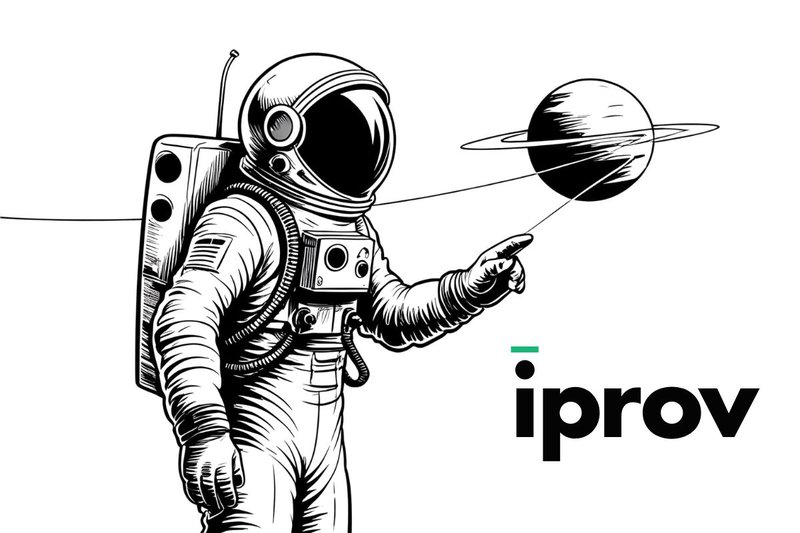
Tracking the right campaign measurement metrics is crucial to avoid wasting time and money. Business owners in healthcare, tech, and professional services often seek growth but may not know which numbers matter most. This guide outlines essential KPIs that reveal the effectiveness of ad campaigns, helping to cut guesswork and focus on what truly drives business growth.
Key Takeaways:
- ROI = (Revenue – Cost) ÷ Cost × 100; core measurement for profitability.
- Conversion Rate = Conversions ÷ Visitors × 100; indicates effectiveness of messaging.
- CPA = Cost ÷ Customers; aim for CPA lower than your average order value.
- CPL = Cost ÷ Leads; useful for longer sales cycles.
- ROAS = Ad Revenue ÷ Ad Spend; tracks ad-specific return.
- CLV = Total projected customer revenue; pair with CAC to assess long-term value.
- SMART goals connect campaign efforts with measurable KPIs.
- Funnel-stage metrics: impressions (top), clicks (mid), conversions (bottom).
- Cross-channel success: use visits, source-based conversions, and UTM codes.
- Brand awareness: mentions, share of voice, sentiment, Google Trends.
- Monitoring Tools: GA, HubSpot, UTM links, alerts; tweak campaigns mid-run.
- A/B testing: regularly improve creatives, CTAs, and landing pages.
- After-campaign metrics: NPS, repurchase ratio, CLV/CAC ratios for evaluating ongoing value.
- Attribution models: first-touch (short cycles) vs. multi-touch (longer journeys).

Essential Campaign Measurement Metrics for Marketing Success
To assess a campaign's impact, begin with ROI.
Return on Investment (ROI) measures campaign profitability.
Formula: (Revenue – Cost) ÷ Cost × 100
Example: Spend $1,000 and earn $4,000; ROI is 300%. A high ROI indicates success, while a low ROI suggests reevaluation.
Focus on user engagement next.
Conversion Rate assesses leads or buyer conversion.
Formula: Conversions ÷ Visitors × 100
A conversion rate of 5% means 5 out of 100 visitors took action. It highlights the persuasiveness of messaging. A lower rate? Consider refining your landing page.
Cost management is also critical.
Cost Per Acquisition (CPA) tracks the cost to acquire a new customer.
Example: Spend $500 to secure 10 customers; CPA is $50. Achieve a CPA below your product’s sale price. For a $150 product, a $50 CPA is optimal.
Cost Per Lead (CPL) details the cost of lead acquisition.
This metric is crucial for longer sales processes or B2B pathways.
Evaluate returns on ad expenses.
Return on Ad Spend (ROAS) concentrates on direct ad revenue.
Formula: Ad Revenue ÷ Ad Spend
Earning $1,000 from $250 in ads equates to a ROAS of 4, meaning each dollar returns fourfold. This is valuable when leads don't instantly convert.
Customer Lifetime Value (CLV) extends beyond single purchases.
If a customer spends $100 four times annually over three years, their CLV is $1,200. Compare CLV with CPA. Spending $100 to gain $1,200 indicates robustness. Tracking key KPIs for ad campaigns ensures informed decisions.
Avoid focusing solely on likes or clicks. Prioritize data that demonstrates growth and results.
For comprehensive insights, explore this marketing KPI guide. It aids in selecting data tailored to your objectives. Measure wisely and let your data shape future strategies.
Aligning Campaign Objectives with Measurable Marketing Metrics
Start with a well-defined goal linked to quantifiable metrics. SMART goals facilitate this alignment.
SMART stands for Specific, Measurable, Attainable, Relevant, and Time-bound. For example, "Get 300 email signups in 30 days" is more precise than "Get more leads."
Identify a corresponding KPI once the goal is set. Ask, “How will this be confirmed?” The answer forms the metric.
To boost signups, use conversion rate:
Completed actions ÷ Total visitors = Conversion rate.
Converting 150 out of 500 visitors yields a 30% rate.
Link these to funnel stages:
- Top: Monitor reach and visits.
- Middle: Analyze clicks and leads.
- Bottom: Track signups, bookings, or revenue.
Example: Metrics for a video ad campaign vary by stage:
- Top-of-funnel: Impressions, video views over 3 seconds
- Middle: View rates, clicks, interactions
- Bottom: Form fills, purchases, signups
Plan the funnel for effective measurement.
Ensure that campaign goals align with business outcomes. Skip mere impressions—focus on actual purchases.
Create a goal-metric map for internal cohesion: one goal with 2–3 metrics to gauge success. Share it to maintain team alignment.
For assistance, Marketing Evolution offers valuable resources to connect metrics with stage-specific outcomes.
Mapping every metric to a specific result ensures clarity on what works—and where to optimize, preventing unnecessary expenditure or effort.
Metrics to Evaluate Digital and Offline Campaign Performance
When reviewing campaigns, the key is identifying what worked and how to prove it. Evaluating both digital and offline metrics provides a comprehensive picture.
Web and SEO Campaign Measurement Metrics
Begin with web analytics. Measure traffic, bounce rate, and time spent on site to gauge content engagement. Conversion rate is crucial: for example, 100 visits resulting in 5 signups equals a 5% conversion rate. Evaluate SEO by checking page rankings for relevant keywords. Stronger rankings increase visibility, supported by backlink growth and keyword data.
Social Ads and Paid Campaign Metrics
In social media advertising, track impressions and clicks. Click-through rate (CTR) is essential: if 10,000 people view an ad but only 200 click, the CTR is 2%. Cost per click (CPC) should be minimized for effective targeting. Successful campaigns achieve a balance of high CTR and low CPC.
Offline Event Campaign Measurement
Offline marketing remains effective with a tailored approach. Track RSVPs, attendance, leads, and Net Promoter Score (NPS). For instance, if 70% of attendees were promoters and 10% were detractors, the NPS is 60. Follow-up conversions reveal additional value.
PR Reach and Sentiment Metrics
Public relations, though less tangible, provides valuable data. Track brand mentions and sentiment—positive, neutral, or negative. Increases in branded search volumes following PR efforts indicate success.
Consolidating Campaign Metrics
Integrating online and offline metrics in a shared dashboard provides valuable insights, such as traffic increases correlated with trade events. Tools with cross-channel visibility help connect data points, pinpointing which strategy elements drive success.
Reliable Cross-Channel and Social Media Campaign Measurement Metrics
For accurate insights, clear tracking of each channel is essential.
1. Website Visits by Source: Categorize traffic into email, paid, social, or search visitors.
2. Conversion Rate by Source: Identifies which channels drive actions beyond visits.
3. Cost Per Lead (CPL): Assesses cost efficiency for each paid initiative.
4. Impressions and Engagement Metrics: Measures reach and interest levels.
UTM tags ensure actions are mapped back to their sources via Google Analytics.
Social Media Campaign Measurement Metrics
Key social KPIs include:
- Engagement Rate = (Likes + Comments + Shares) ÷ Impressions
- Follower Growth = (New – Old followers) ÷ Old × 100
- Impressions = Total views, repeated or not
Patterns can reveal:
- High reach but low clicks suggest messaging improvements.
- Many likes without growth indicate content-tone misalignment.
- Strong engagement is a sign of effective storytelling.
Multi-Channel User Tracking
Utilize multi-source tracking platforms like HubSpot to connect user interactions across all stages, from first click to sale. Content syndication and guest posting illuminate off-site impacts. Precision enhances tracking accuracy, matching user behavior with their journey.
Tracking Brand Awareness and Sentiment Measurement Metrics
Start by measuring mentions. Count appearances in blogs, social posts, and news, as increases denote growing attention.
Then, assess share of voice: if your brand is featured in half of industry coverage, your share is 50%. Track branded searches and use Google Trends for search volume insights over time.
Sentiment analysis tools categorize mentions as positive, neutral, or negative. Human review complements this by analyzing reviews, comments, and surveys. Video ad recall tests can further determine brand impact.
Tracking brand health goes beyond numbers to reflect public perception. Associations with trust and value mark substantial progress. For additional insights, refer to this brand awareness guide.
Consistent monitoring of mentions and sentiment provides long-term impact indicators.
Tools and Techniques to Monitor in Real-Time
To stay ahead, monitoring campaigns daily is essential.
Effective Tools for Real-Time Monitoring
Google Analytics, HubSpot, and Adobe provide real-time dashboards for campaign measurement metrics. These tools display clicks, bounce rates, and time on site—even while the campaign is active.
UTM codes reveal which messages drive visits. They can be created using Google’s Campaign URL tool.
Session tracking allows insight into visitor paths—from the first view to goal completion. For instance, if 10 people click an ad but only 1 signs up, there's likely an issue needing attention.
Rapid Problem Identification
Comparing planned funnel steps with actual user behavior can quickly identify issues. If visitors click but don’t convert, the landing page may require improvement.
Setting alerts ensures immediate notifications if signups fall below a certain threshold, allowing for same-day issue resolution, saving both time and money.
For guidance on planning, consult this [market research guide].
Steps for Tracking Live Campaigns:
- Set a clear weekly goal like “30 new leads.”
- Apply UTM codes to all campaign links.
- Monitor the funnel daily for drop-offs.
- Use tools that reveal user behavior and clicks.
- Respond immediately to performance issues.
These tools and techniques ensure a quick response and prevent wasted effort.
How A/B Testing and Ongoing Optimization Enhance Campaign Measurement Metrics
A/B testing is pivotal in understanding user connections, with each small test demonstrating the best choice.
Testing focuses on one element at a time: headlines, images, or CTAs. For example:
“Buy Now” vs. “Learn More”
Bright images vs. minimalist
The winning version, evidenced by more clicks or sales, confirms the test's success.
Utilize metrics like conversions, CTR, or bounce rates to assess results. If version A generates 15 leads and B only 5, the win is evident.
Establish ongoing test cycles, usually every two weeks to a month, focusing on headlines, style, and layout. Continuous refinement eliminates weak spots, steering towards high-performing campaigns.
Regular testing maintains cost efficiency and fuels growth. Continual optimization is key to enduring success.
Post-Campaign Measurement Metrics to Reveal Long-Term Success
To evaluate long-term success, consider metrics beyond immediate clicks and sales spikes.
Key Metrics:
- Net Promoter Score (NPS): Measures likelihood of user recommendations.
- Repurchase Ratio: Indicates customer retention and loyalty.
- Customer Lifetime Value (CLV): Evaluates customer value over time.
NPS calculates promoters (scores 9–10) versus detractors (scores 0–6). A strong NPS shows positive user sentiment.
Repurchase ratio highlights longevity. If 40 out of 100 buyers return, the 40% rate is telling.
Tracking customer retention complements new customer acquisition efforts, emphasizing loyal customer importance.
The CLV to Customer Acquisition Cost (CAC) ratio must also be analyzed:
Example: Spending $50 to acquire a customer who spends $500 over five years results in a 10:1 return. A ratio under 3:1 is concerning.
Results should be compared to past performances and industry standards to spot patterns and potential issues.
Success is measured by whether the campaign builds trust, loyalty, and visibility—capturing the complete picture.
Evaluating Campaign Measurement Metrics for PPC, Facebook Ads, and Google Ads Success
When analyzing PPC efforts, focus on data linking cost to actions.
PPC Campaign Measurement Metrics:
- CPC (Cost per Click): Reflects spend per site visitor
- CTR (Click-Through Rate): High CTR denotes strong messaging
- Conversion Rate: Tracks whether clicks turned into actions
Low CPC combined with high CTR signifies effective targeting and relevance.
Facebook Campaign Measurement Metrics:
- Reach: Total audience exposure
- CTR: Measures ad appeal
- Attributed Conversions: Actions taken post-ad exposure
Employ Meta Pixel to trace actions influenced by Facebook ads.
Google Ads Measurement Metrics:
- Quality Score: Google's rating based on relevance, click rates, and landing page quality
- ROAS (Return on Ad Spend): Revenue generated per ad dollar spent
- Conversions: Tracked via Tag Manager or Analytics
Integrating these metrics offers comprehensive insights. If there are clicks without conversions, revisiting and improving the landing page is recommended. High costs with minimal traffic may indicate issues with ad relevance or keyword suitability.
Effective paid ads transcend views; they lead to tangible, measurable outcomes.
How Marketers Can Use Attribution Models for Effective Campaign Measurement Metrics
Attribution identifies which steps in a campaign receive credit for conversions.
First-Touch vs. Multi-Touch Attribution
First-touch attribution credits the starting point, ideal for short paths and impulse buys. It is suitable for simple funnels.
Multi-touch attribution assigns partial credit to each step, making it effective for complex B2B paths involving multiple actions.
Utilize tools like HubSpot, Google Analytics, or built-in platform trackers for accurate attribution tracking. For more, explore this guide on matching attribution types to campaigns.
Matching Attribution with Conversion Paths for Accurate Campaign Measurement Metrics
For lead generation, use attribution that captures each step, such as FB ad clicks, email signups, and final demo bookings.
Determine the actual source of leads. If the budget was allocated to Google Ads but conversions originated from LinkedIn, adjust the budget accordingly.
Use the following metrics to evaluate accuracy:
- Precision = True positives ÷ (True positives + False positives)
- Recall = True positives ÷ (True positives + False negatives)
Building Unified Reporting from All Sources
Consolidate emails, clicks, and CRM activity into a single report. Use UTM links to sync analytics tools and combine them in a dashboard.
This approach allows for detailed reports such as:
“We acquired 57 leads. LinkedIn generated 30. Email campaigns yielded 18 demo bookings. Achieved at a cost of $1,000—resulting in $17.54 per lead.”
Effective tracking with attribution converts assumptions into verified results.
For additional insights on tracking brand awareness, visit this brand awareness tracking guide.
Transform Your Campaign with Data-Driven Insights
Without strong KPI visibility, campaigns run blindly. Know what to measure, when to adjust, and what success looks like. From revenue to sentiment, let each number guide your decisions.
Ready to turn metrics into momentum? Let's do it together.
